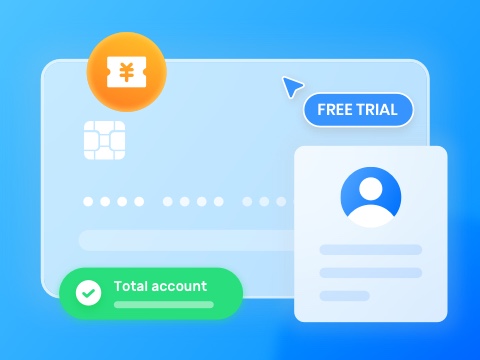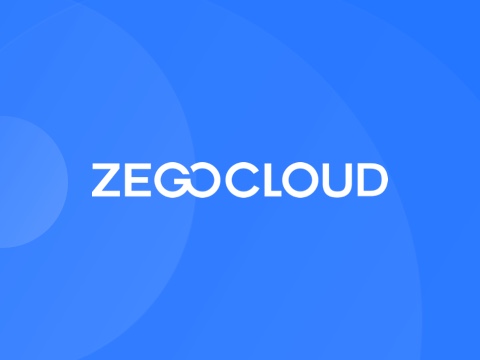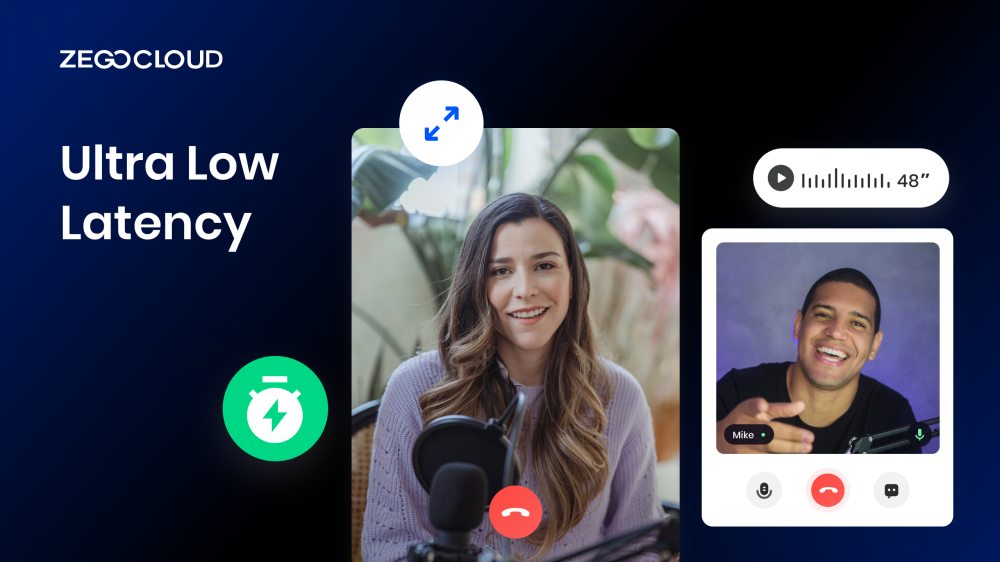Nowadays, the world is moving rapidly, with everyone trying to get the fastest possible service for everything. It can be about information that can make or break a deal or gaming, where split-second decisions can determine the outcome. All of that has increased the importance of ultra low latency to new heights. This article will discuss what ultra-low latency is, its importance, its uses, and how to achieve it in detail.
What is Ultra Low Latency?
Latency or delay is the time it takes for a data transmission request between two systems to complete. In simple words, it is the total time when one system initiates a request and until it receives the corresponding data. It is also referred to as time delay or lag time.
Thus, the ultra-low latency is the shortest possible time for a data request to complete between two systems. In other words, it is the shortest possible time for data to travel from one point to another in a system. The concept of ultra-low latency is popular and highly important in fields where real-time communication needs to be as fast and precise as possible.
How Important is Ultra Low Latency?
It is essential in many fields, especially where real-time data processing and transmission are vital. Even a slight delay or latency can have significant consequences in these contexts. Here are a few of the reasons that answer the question of whether ultra-low latency is good and how important it is:
- Real-Time Content: It is crucial for real-time content such as live streaming, online gaming, and video conferencing, where delays can significantly impact the user experience. For example, in online gaming, high latency can cause input lag, resulting in delayed or unresponsive actions.
- Better Content Synchronization: Low latency enables better audio and video content synchronization. It ensures that the two are closely aligned and provide a seamless and immersive experience for the user. That makes it essential for video calls where even a small delay between video and audio can ruin the whole experience.
- Less Buffering: If your service offers ultra-low latency, it can reduce buffering in streaming services, leading to smoother and uninterrupted playback. Less buffering is highly important for apps that deal with live event broadcasts like sports. The interruptions can detract users from the event’s excitement, while ultra-low latency ensures quick and efficient content delivery.
- Fewer Pauses: With ultra-low latency, there are fewer pauses or delays in content delivery, resulting in a more seamless and natural user experience. It can enhance the effectiveness of communication and collaboration in applications such as video conferencing and live streaming. Moreover, it ensures content is smooth and continuous without sudden pauses or delays.

Who Needs Ultra-Low Latency?
After discussing the importance of ultra-low latency, it is also important to look at various fields where it is essential. The ultra-low latency is essential in many fields, from financial trading to live streaming and virtual reality. Below are a few of the fields where ultra-low latency is extremely important:
1. Online Games
Ultra-low latency is highly important in online gaming. These games require a real-time response to player inputs to ensure smooth and enjoyable gameplay. It is especially an essential factor in MMO games. Any latency or delay can result in a poor gaming experience.
2. Live Streaming
When live streaming events such as sports or concerts, require low latency to ensure that viewers receive the video and audio feed in near real-time. Low-level latency is also important during an interactive live stream to ensure that viewers and streamers are able to interact in real time.
3. Telemedicine
A core part of any telemedicine app or service is the ensured ultra-low latency during the interactions between patients and health care providers. The low latency helps create a smooth and lag-free session where patients can discuss their ailments without issues.
4. Financial Trading
In financial trading, ultra-low latency is considered extremely important when it comes to high-frequency trading. Here, a delay of even one second can make or break the deal. Thus, low latency is crucial for financial firms to execute trades quickly and gain a competitive advantage.
5. Chatting Applications
One field where latency is a deal breaker for users is when using chatting or social communication apps. The ultra-low latency is important for all text, voice, and video chatting applications. Moreover, it allows users to have a seamless and lag-free chatting experience.
How to Achieve Ultra-Low Latency Streaming
Audiences today expect live streams to start instantly, look sharp, and play smoothly. To meet these demands, ZEGOCLOUD has launched its ultra-low latency service, designed to eliminate common issues such as first-frame delays, blurry visuals, and playback stutters. With an all-in-one SDK that combines live streaming, real-time audio and video, and AI enhancements, it enables developers to deliver seamless experiences across diverse scenarios while reducing operational costs.
1. First-frame optimization: instant start, smoother experience
One of the most critical factors in user experience is the time it takes for the first frame to appear when entering a live stream. Delays of even a few seconds are disruptive and unacceptable in today’s environment. ZEGOCLOUD addresses this challenge with an “instant start” approach that refines each stage between the viewer’s initial click and the moment audio and video begin to play.
Through highly customizable scheduling strategies, ZEGOCLOUD ensures that each viewer is connected to the most suitable access node. The system is also capable of prioritizing high-demand live rooms so that popular streams always benefit from the most reliable resources. Together with technical innovations such as zero-RTT connection and parallel fetching, this solution enables the stream to appear within milliseconds rather than seconds.
2. Network quality: ensuring clarity and smoothness
Clarity and stability during playback are equally essential to the overall experience. In global transmission scenarios, challenges such as high latency, jitter, and packet loss are often unavoidable. Conventional CDN methods struggle under conditions such as 200ms RTT combined with 30 percent packet loss, leading to blurred images or frequent interruptions.
To overcome these limitations, ZEGOCLOUD has developed proprietary transport protocols and advanced error correction algorithms that maintain continuous streaming even under extreme conditions. Performance has been validated at packet loss rates as high as 70 percent. Furthermore, with the integration of AI-powered video enhancement, super-resolution techniques, and intelligent error concealment, streams remain both sharp and fluid even in bandwidth-constrained environments.
3. Adaptive playback: intelligent buffering for real networks
The final stage of optimization focuses on playback. Traditional players often rely on filling a large buffer before starting, which inevitably introduces delays. ZEGOCLOUD’s adaptive player instead adjusts buffer size dynamically according to real-time network conditions.
This approach allows playback to begin as soon as the first frame is received, while simultaneously balancing stability and quality throughout the session. In practice, this has achieved a domestic instant-start rate of 99 percent, with more than 85 percent of viewers seeing the first frame within 200 milliseconds.
Top 3 Ultra Low Latency Video Streaming Solutions
Want to find the best video streaming solutions that guarantee ultra-low latency video streaming? There are many great choices available online for low-latency video streaming solutions. Below, we have chosen the top three solutions for you:
1. ZEGOCLOUD Live Streaming API & SDK
When it comes to the best live video streaming solution with ultra-low latency, ZEGOCLOUD Live Streaming API & SDK tops the chart. It offers an ultra-low latency of up to 600ms for interactive live streaming. This less than 1-second latency ensures perfect synchronization between audience and host, enhancing live streaming to new heights.
ZEGOCLOUD Live Streaming API and SDK support various features such as real-time audio and video encoding, decoding, recording, and playback. Moreover, it also offers features like face beautification, virtual gifts, real-time chat, and multi-person interaction. During standard live streaming, it supports over 10 million concurrent viewers for a single stream.
2. Agora Live Streaming SDK

Agora Live Streaming SDK provides a live streaming solution with ultra-low latency developed by Agora.io. With Agora Live Streaming SDK, developers can create live streaming applications that support features such as multi-party video conferencing, real-time messaging, screen sharing, and recording. Its standard version offers latency between 1500ms to 200ms.
If you get the premium version, the latency goes down to 800ms. The other features offered by Agora Live Streaming SDK include co-hosting, dual video streams, screen sharing, and recording.
3. Livery Low Latency Live Streaming

Livery also offers a great live video streaming solution with ultra-low latency. It offers a latency of fewer than 3 seconds, ensuring all viewers can see the content in real-time. Moreover, it supports seamless integration of devices which means viewers see the same frame and shot regardless of the device.
There are also many interactive widgets to enhance the live video streaming experience. Additionally, it allows users to stream for hours at ultra-HD quality. The live streaming is also recorded for viewers who missed the live event.
Why Choose ZEGOCLOUD for Ultra-Low Latency Streaming?
Delivering true ultra-low latency is not simply a matter of reducing delay by a few milliseconds. It is about creating a complete viewing experience that feels instant, clear, and uninterrupted. ZEGOCLOUD draws on years of expertise in real-time communication and a global infrastructure to deliver a solution that consistently exceeds expectations.
- Instant start: Streams open almost immediately, with 99 percent of sessions achieving first-frame display, and more than 85 percent within just 200 milliseconds.
- Resilient performance: Even under severe network conditions, playback remains smooth, with proven stability at packet loss rates as high as 70 percent.
- Enhanced clarity: AI-powered video enhancement and super-resolution ensure that visuals remain sharp and immersive, even in low-bandwidth environments.
- Global reliability: With over 200 edge nodes worldwide, viewers are automatically connected to the most optimal route for a seamless live experience.
For organizations seeking to elevate their live streaming to the next level, ZEGOCLOUD offers a balance of speed, quality, and reliability that is difficult to match.
Conclusion
In summary, ultra-low latency has become increasingly important in live streaming. With the rise of online events and remote collaboration, everyone is looking for reliable and efficient video solutions. In this regard, ZEGOCLOUD Live Streaming API & SDK stands out as an excellent choice. Its advanced technology and customizable features offer a seamless and responsive streaming experience that can meet any organization’s or individual’s needs.
Read more:
FAQ
Q1: What is ultra low latency?
Ultra low latency refers to the ability to transmit data with extremely minimal delay, often within milliseconds. In the context of video and real-time communication, it ensures that the time between sending and receiving information is nearly imperceptible, creating an experience that feels instantaneous.
Q2: Is ultra low latency good?
Yes. Ultra low latency is essential in scenarios where timing is critical. It improves responsiveness, enhances synchronization, and minimizes disruptions. Whether in financial trading, telemedicine, or real-time collaboration, it provides a decisive advantage by ensuring interactions occur in real time.
Q3: Is ultra low latency good for streaming?
Absolutely. For live streaming, ultra low latency means that viewers can experience events almost as they happen, with little to no delay. This is particularly important for interactive live streams, gaming broadcasts, and sports events, where audience engagement depends on real-time reactions and smooth delivery.
Let’s Build APP Together
Start building with real-time video, voice & chat SDK for apps today!










